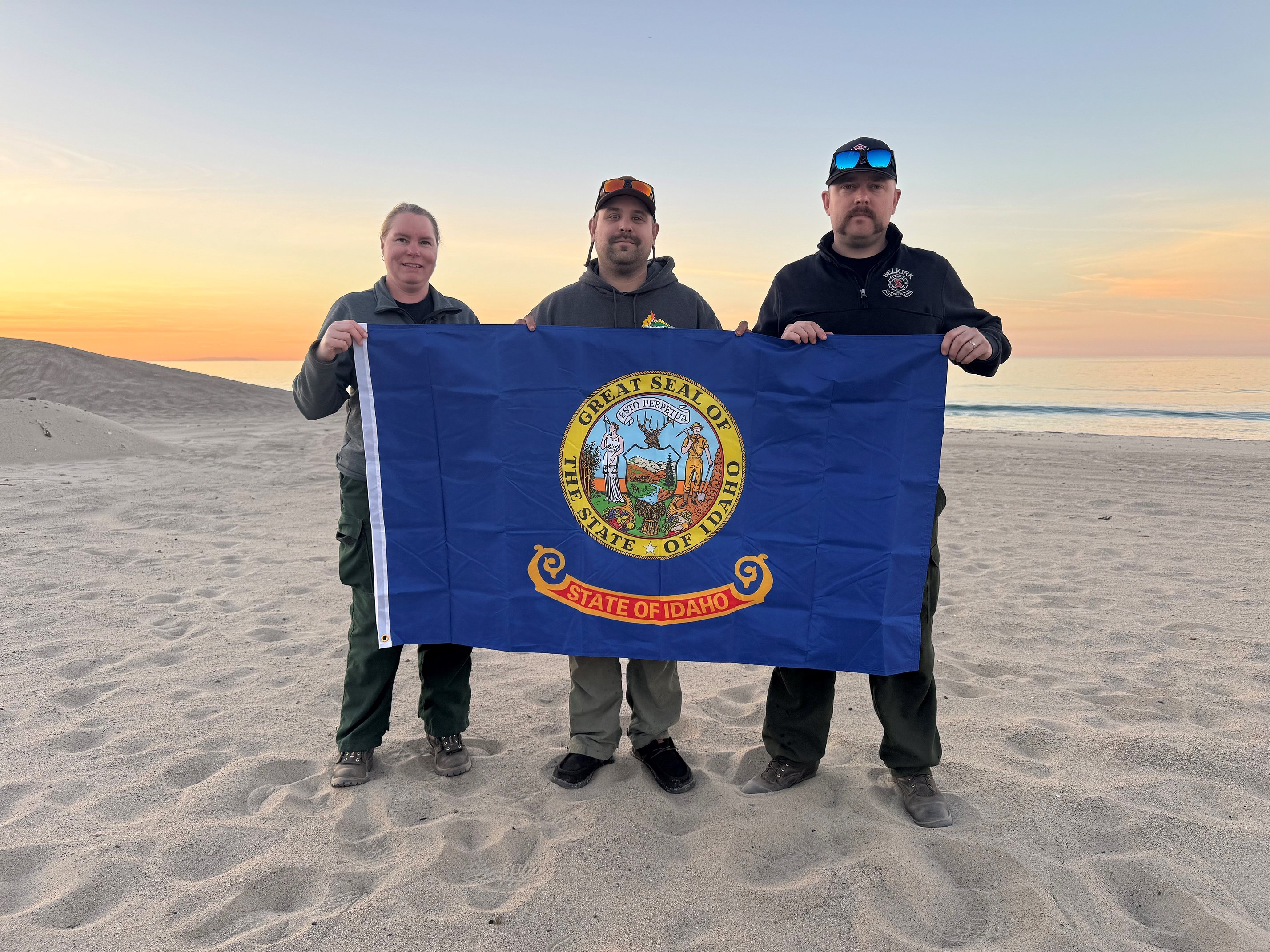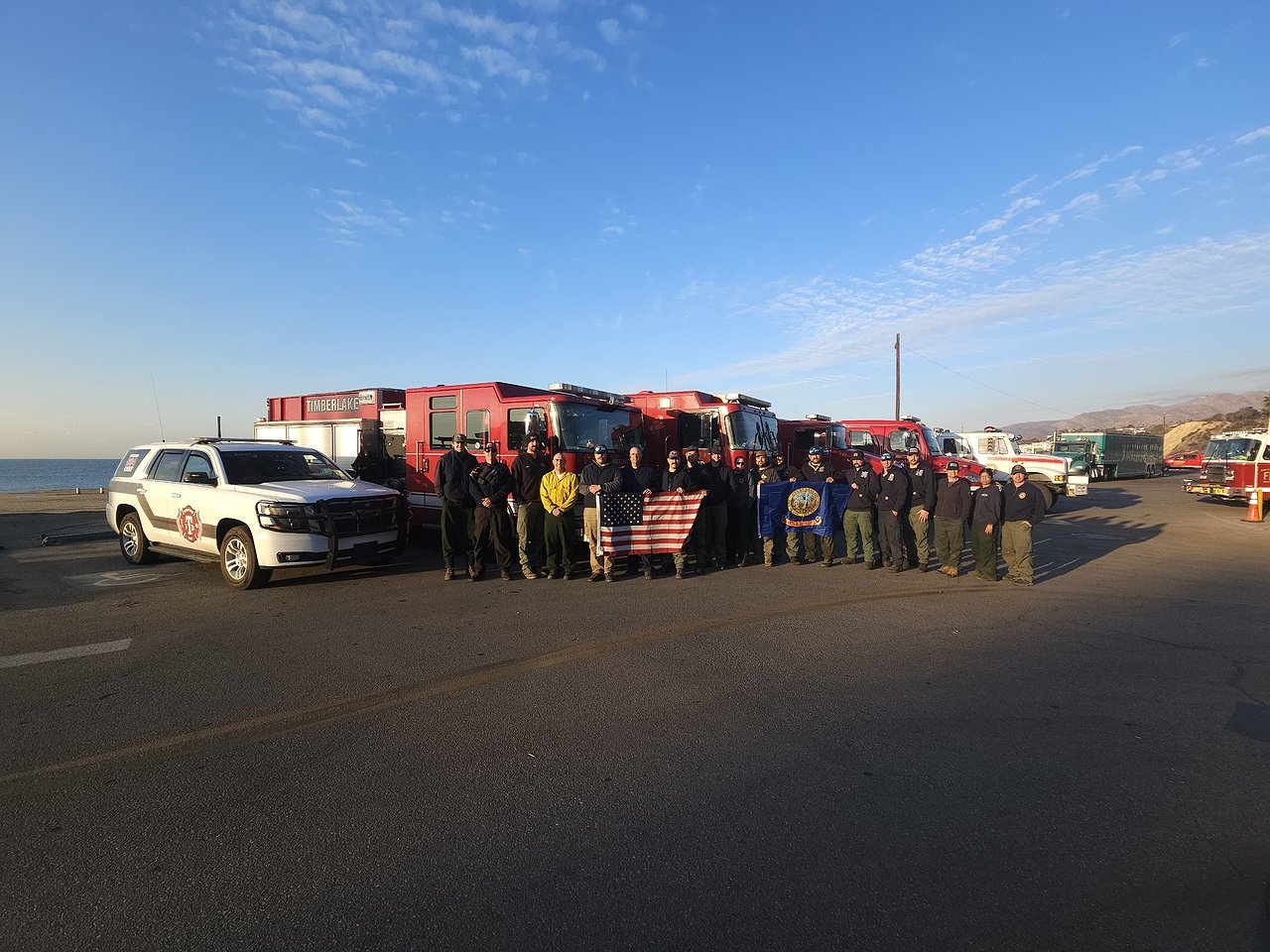Firefighters return from California — Selkirk, Northside responders step up to give aid
ERIC WELCH | Hagadone News Network | UPDATED 4 months, 1 week AGO
After a two-week deployment to fight wildfires in Southern California, a crew of Bonner County responders returned home Tuesday evening to rest, regroup and recuperate.
The group of four firefighters — which included staff from Selkirk Fire Rescue & EMS and Northside Fire District — was part of a cohort of 104 Idaho personnel who drove 1,200 miles to Los Angeles in response to a request from the California Governor’s Office of Emergency Services earlier this month.
“It was humbling going down there and seeing the devastation,” said Selkirk Captain Reny Hansen. “It just looked like a vacated city that got hit by a bomb.”
Hansen, along with Selkirk engineer Daniel Jensen and Northside firefighters Tanner Wright and Ryan Jackson, were recruited for the task when the Idaho Office of Emergency Management shared California’s request for help with agencies across the state Jan. 8.
Selkirk Fire Chief Jeff Armstrong assembled the team at 2 p.m. Jan. 8, and by 4:30 a.m. Jan. 9, they were en route to Los Angeles in Selkirk’s “Clifford” fire engine.
“It was a last-minute emergency call, so it was whoever was available,” Hansen said. “Most of us keep our bags packed year-round. We're always ready to go.”
When they arrived, all five Idaho task forces were assigned to the Pacific Palisades neighborhood where the Palisades Fire, the largest of the area’s blazes, started Jan. 7. There, they patrolled the devastated area to put out smoldering hotspots remaining after the fire had spread elsewhere.
“It was crazy. We lost a half-city block a couple of years ago, and we thought that was a big deal,” Wright said, referring to a 2019 Sandpoint fire that destroyed two downtown buildings. “This was a whole other world.”
Additionally, the crew from Bonner County reintroduced homeowners to their houses for the first time since they evacuated. Residents sometimes discovered their house had been destroyed while the home next door was intact; Hansen said the variability is due to firefighting efforts, differences in design and luck.
“People would come in and say, ‘Why did their house make it and mine didn’t?’” she said. “It was very emotional for a lot of the public.”
For the duration of their deployment, the crew worked a shift schedule of 24 hours on, 24 hours off. After a full day and night of continuous work, the firefighters would return to the hotel where they were housed to finally rest, completely exhausted.
“We’d eat and go to bed,” Hansen said.
Hansen noted that relief coordinators ensured firefighters were fed and cared for during downtime.
“It was unbelievable how well we were taken care of,” she said. “For as many people that were there, they did a fantastic job.”
As their two-week shift came to a close, U.S. President Donald Trump visited Los Angeles to assess the situation and show support for responders. When he arrived, the crew watched Marine One — the president’s helicopter — touch down.
“It was really cool,” Hansen said. “That was the highlight of our trip.”
Crew members expressed appreciation for the other Selkirk and Northside firefighters who took on extra hours to make sure their districts remained adequately staffed while the group was away.
“They came in on their days off,” Hansen said. “If they wouldn't have stepped up, we wouldn't have been able to go.”
The firefighters also lauded the Emergency Management Assistance Compact — the agreement between California and Idaho that allowed them to make the trip and provide aid. For their contributions to the response effort, all of the Idaho districts that sent firefighters will be reimbursed by California or the federal government.
If necessary, crew members said, the agreement will allow California firefighters to repay the favor if Idaho experiences a similar disaster in the future.
“Keeping a program like this open is very beneficial for everyone,” Jensen said.
“Someday, they’ll come help us if we need it,” added Hansen.
MORE FRONT-PAGE-SLIDER STORIES

Local firefighters take on 2025 Seattle stairclimb
Bonner County Daily Bee | Updated 2 months, 2 weeks ago
ARTICLES BY ERIC WELCH

City personnel, community members discuss options as James E. Russell Center costs exceed revenue
Community planning and development director Jason Welker, who oversees Sandpoint’s parks and recreation programs and facilities, suggested that the city could either maintain its current approach at the facility, shrink the center’s operating hours, install new modular playing surfaces for mixed sports use on some of the courts, or recruit a nonprofit organization to operate the facility.

‘Expressions’ courses fill non-school art void
Teens participating in Gentry’s class practiced printmaking, painting and design to create works including a pop art-inspired self-portrait. “My goal when I'm teaching the kids is to just show them lots of different ways that you can make really cool art. It doesn't have to be just traditional,” she said. “The kind of art they do with me, they get to just express themselves, and it doesn't have to be perfection.”

City of Sandpoint sheds light on sewage incident outcome
On the morning of Feb. 24, an electrical control system failure caused pumps to shut off unexpectedly at Sandpoint’s municipal wastewater treatment plant — a city-owned facility that removes contaminants from sewage before discharging it into the Pend Oreille River.







